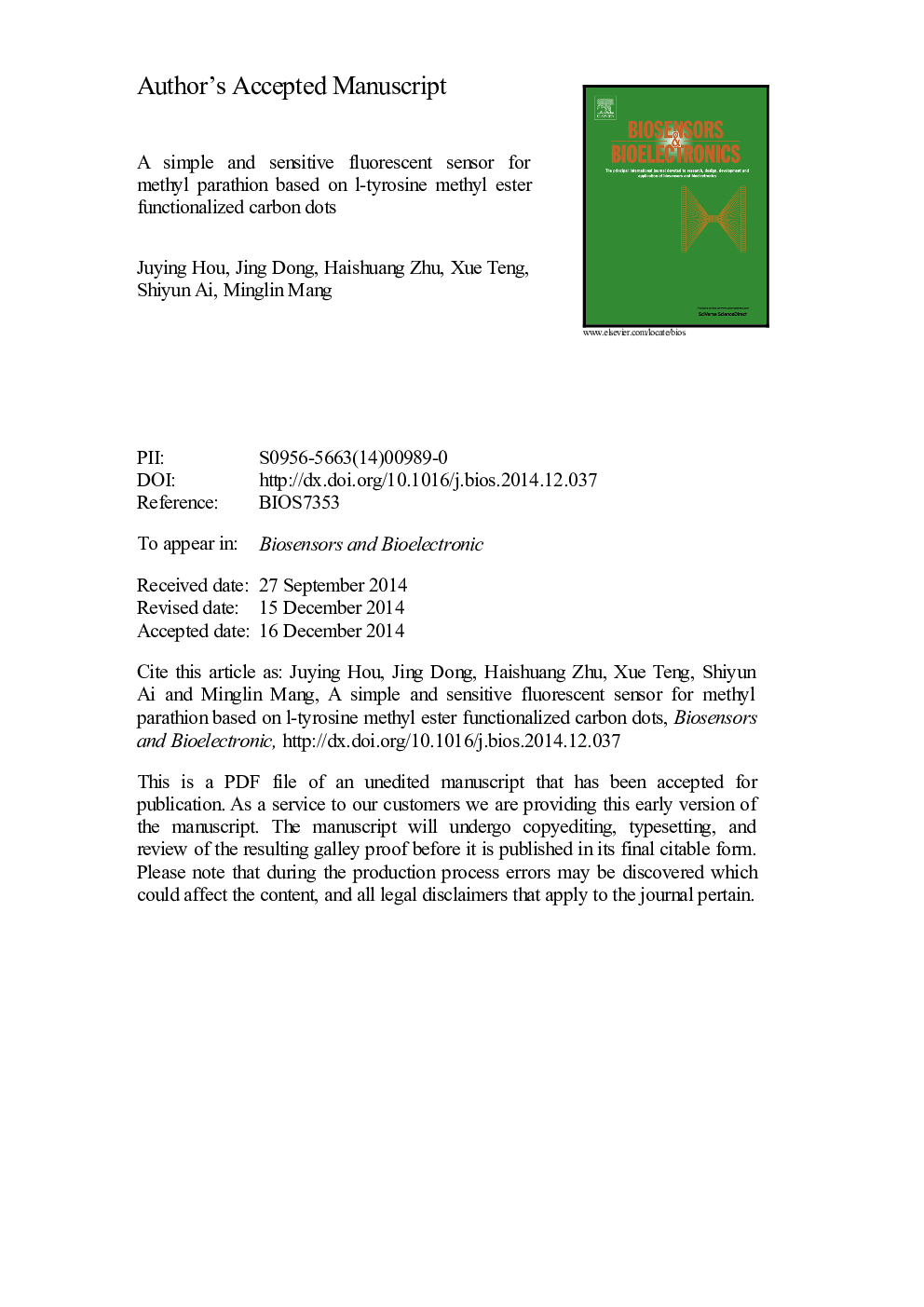| Article ID | Journal | Published Year | Pages | File Type |
|---|---|---|---|---|
| 7232260 | Biosensors and Bioelectronics | 2015 | 26 Pages |
Abstract
In this paper, a simple and sensitive fluorescent sensor for methyl parathion is developed based on l-tyrosine methyl ester functionalized carbon dots (Tyr-CDs) and tyrosinase system. The carbon dots are obtained by simple hydrothermal reaction using citric acid as carbon resource and l-tyrosine methyl ester as modification reagent. The carbon dots are characterized by transmission electron microscope, high resolution transmission electron microscopy, X-ray diffraction spectrum, Fourier transform infrared spectroscopy, and X-ray photoelectron spectroscopy. The carbon dots show strong and stable photoluminescence with a quantum yield of 3.8%. Tyrosinase can catalyze the oxidation of tyrosine methyl ester on the surface of carbon dots to corresponding quinone products, which can quench the fluorescence of carbon dots. When organophosphorus pesticides (OPs) are introduced in system, they can decrease the enzyme activity, thus decrease the fluorescence quenching rate. Methyl parathion, as a model of OPs, was detected. Experimental results show that the enzyme inhibition rate is proportional to the logarithm of the methyl parathion concentration in the range 1.0Ã10â10-1.0Ã10â4Â M with the detection limit (S/N=3) of 4.8Ã10â11Â M. This determination method shows a low detection limit, wide linear range, good selectivity and high reproducibility. This sensing system has been successfully used for the analysis of cabbage, milk and fruit juice samples.
Related Topics
Physical Sciences and Engineering
Chemistry
Analytical Chemistry
Authors
Juying Hou, Jing Dong, Haishuang Zhu, Xue Teng, Shiyun Ai, Minglin Mang,
